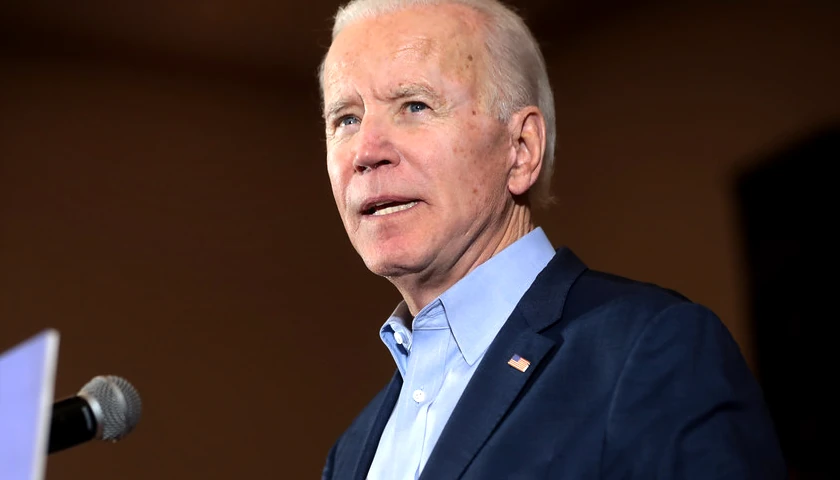by Nick Pope
The Supreme Court is being inundated with emergency appeals targeting Environmental Protection Agency (EPA) rules and regulations in the wake of a landmark decision that curbed the agency’s power.
The Supreme Court’s emergency docket, which is made up of expedited cases from applicants seeking immediate action, currently features 18 applications, with 11 of them pertaining to the agency’s aggressive power plant regulations finalized in April. The flood of emergency applications seeking immediate relief from landmark EPA rules is a sign of things to come in the wake of the court’s June ruling that overturned Chevron deference, a precedent that formerly gave federal agencies broad power to essentially interpret the law themselves in instances of statutory ambiguity, former high-ranking EPA officials told the Daily Caller News Foundation.
“I do think we’re going to see more of this in a post-Chevron world, particularly when an agency tries to go beyond the congressional intent or the longstanding regulatory practices of the agency,” Andrew Wheeler, who served as EPA administrator for former President Donald Trump, told the DCNF. “This power plant rule is supposed to be fuel switching, and this section of the Clean Air Act has not done that in the past. I think when you deviate from standard practices, you’re going to see more post-Chevron challenges.”
Each of the 17 cases pending against the EPA were filed in the weeks that followed the court’s decision to overturn Chevron deference, according to SCOTUSblog. Beyond the 11 applications that pertain directly to the EPA’s power plant regulations, there are also six taking aim at the agency’s May 7 action establishing new National Emission Standards for Hazardous Air Pollutants, and one application does not have to do with the EPA.
 If enforced, the EPA’s power plant rules will require existing coal plants to control 90% of their emissions by 2032 if they want to run after 2039, and the regulations will also mandate new natural gas-fired plants to do the same in order to stay open past 2039, according to the agency. Critics of the EPA’s power plant rules have characterized the regulations as a de facto attempt to circumvent the Supreme Court’s 2022 decision in West Virginia v. EPA, which overturned the Obama EPA’s so-called “Clean Power Plan.”
If enforced, the EPA’s power plant rules will require existing coal plants to control 90% of their emissions by 2032 if they want to run after 2039, and the regulations will also mandate new natural gas-fired plants to do the same in order to stay open past 2039, according to the agency. Critics of the EPA’s power plant rules have characterized the regulations as a de facto attempt to circumvent the Supreme Court’s 2022 decision in West Virginia v. EPA, which overturned the Obama EPA’s so-called “Clean Power Plan.”
Plaintiffs in the various applications sitting on the Supreme Court’s emergency docket — sometimes referred to as the “shadow docket” — include states, such as Oklahoma and North Dakota, and industry stakeholders like Continental Resources and America’s Power. While it is unlikely that the Supreme Court will take up all or even many of these cases, it has the opportunity to seize on at least one of the opportunities in the emergency docket to take on one of the most aggressive regulations promulgated during President Joe Biden’s term in office.
“To me, it’s very exciting, because it is an available legal tool that I think will be really important to push back against this administration’s continued disregard for clear lines of the law,” Mandy Gunasekara, who served as chief of staff for the Trump EPA, told the DCNF regarding the post-Chevron deference legal landscape.
Gunasekara likened the Biden EPA’s approach to major regulations as “a little bit of the spaghetti-against-the-wall approach,” but also gave the agency some credit for generally being strategic in pursuit of its agenda. However, the agency may have made a miscalculation by rushing to finalize major rules quickly in hopes of avoiding possible Congressional Review Act (CRA) actions if a second Trump administration and GOP-controlled Congress came into power in November, according to Gunasekara and Wheeler.
“They are giving the Supreme Court numerous opportunities to take a shot at fundamental legal problems with this administration’s regulatory activity,” Gunasekara said of the EPA.
Wheeler agreed that the EPA may have blundered in rushing out major rules to beat CRA deadlines at the expense of being able to hedge their work against a post-Chevron deference future.
“I think the Biden administration made a strategic error in trying to push these regulations out prior to the artificial deadline of the Congressional Review Act,” Wheeler told the DCNF. “I said this at the time, they should have waited for the Loper decision so that they could incorporate the Supreme Court’s decision into their cases to make their regulations stronger. They made a conscious decision to try to get as many of these regulations through the process before the artificial Congressional Review Act deadline, knowing that the Loper decision was coming. And I think they should have waited.”
– – –
Nick Pope is a reporter at Daily Caller News Foundation.
Photo “Joe Biden” by Gage Skidmore CC2.0.



